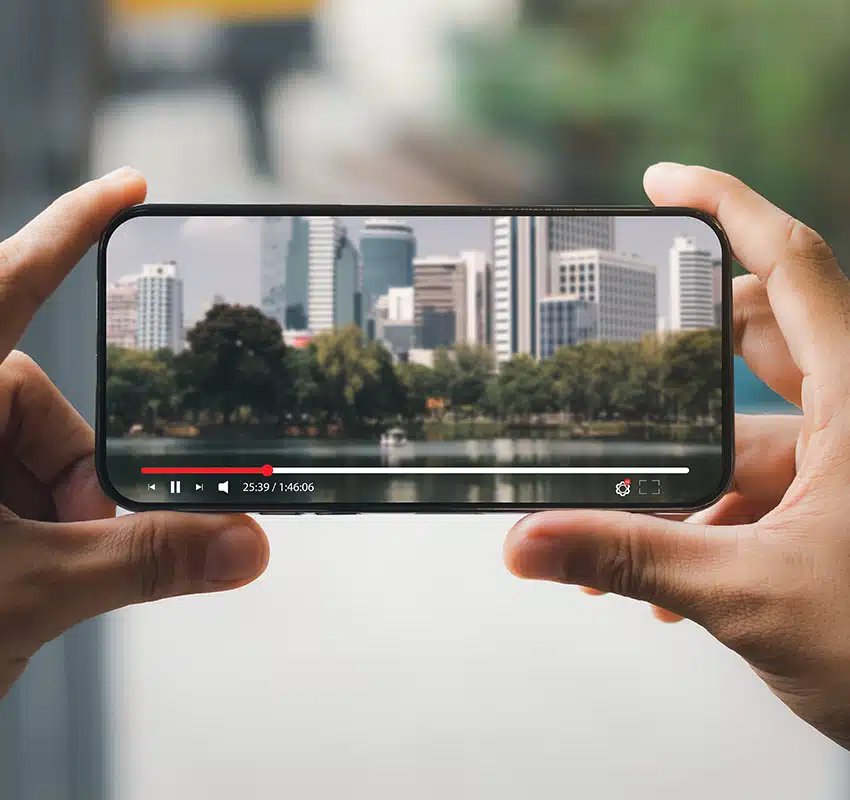Transactional Video on Demand
Transactional Video on Demand (TVOD) allows viewers to pay for individual movies or shows, offering an alternative to subscription-based streaming services. This article explores what Transactional Video on Demand is, how it works, and its advantages over other video-on-demand models.
Key Takeaways
- Transactional Video on Demand operates on a Pay-Per-View basis, where consumers only pay for the specific content they want to watch, unlike subscription-based services that charge a recurring fee.
- There are three main models: Pay-Per-View (PPV), Electronic Sell Through (EST), and Download to Rent (DTR), each catering to different consumer preferences.
- While this model provides more control and flexibility, it can be hindered by higher costs per title and content availability restrictions.
Understanding Transactional Video on Demand
Transactional Video on Demand is a content delivery model that gives viewers the freedom to pay only for the specific movies, shows, or events they want to watch. Unlike subscription-based platforms that charge a recurring fee for access to a large content library, this model offers a more selective and cost-controlled approach.
This format is especially appealing to users who prefer flexibility over commitment. Instead of being tied to bundled services or paying for content they may never watch, viewers can handpick individual titles based on their interests. Whether it’s a newly released film, an exclusive concert, or a one-time sporting event, this model ensures that consumers pay solely for what they intend to watch, rather than settling for free content that might come with ads or limited quality.
For content providers, this approach creates an opportunity to monetize premium or niche offerings without relying on mass subscriptions. It also encourages higher engagement, as users are more likely to value and consume content they’ve specifically chosen and paid for.
What is Transactional Video on Demand?
Transactional Video on Demand is a model where users pay to access specific content, either by renting it for a limited time or purchasing it for permanent viewing. Unlike subscription-based video services that require a monthly or annual fee for access to a large catalog, Transactional Video on Demand streaming services charge only for selected content.
This approach benefits viewers who prefer a more tailored entertainment experience. From the latest movie releases and documentaries to special events, Transactional Video on Demand covers a broad spectrum of interests. It is also advantageous for content creators with unique or premium offerings who wish to monetize their content on a per-title basis.
How Does Transactional Video on Demand Work?
In a Transactional Video on Demand system, users browse available content online through a video streaming service, select what they want to watch, and pay a one-time fee to either rent or purchase content. Rentals are usually available for a limited time, commonly 24 to 48 hours, while purchases provide unlimited access.
This model is accessible across devices, including smartphones, tablets, and smart TVs. It supports various streaming quality options to accommodate different internet speeds. Platforms such as Apple TV and Amazon Prime Video’s store are popular examples of how this service is implemented.
Types of Transactional Video on Demand Models
The world of Transactional Video on Demand is diverse, offering multiple models to cater to different viewer preferences and content types. This flexibility enables content creators to utilize their unique, high-quality content to draw paying viewers. From blockbuster movies to live sports events and educational videos, Transactional Video on Demand models cater to various types of content.
Transactional Video on Demand enables consumers to make a one-time payment for access to specific video content. There are three primary types of Transactional Video on Demand models: Pay-Per-View (PPV), Electronic Sell Through (EST), and Download to Rent (DTR). Each model has distinct features and benefits, catering to various content types and viewer needs.
Pay-Per-View (PPV)
Pay-Per-View (PPV) allows viewers to pay a one-time fee to access specific content, usually live or exclusive events. This model is common for sports matches, concerts, and film premieres.
For example, fans can watch a boxing match live from home without a subscription. The model is effective for high-value, time-sensitive events and provides content creators with a way to generate revenue from special releases.
Electronic Sell Through (EST)
Electronic Sell Through (EST) enables users to buy digital content permanently, similar to owning a physical DVD or Blu-ray. Once purchased, the content can be accessed anytime without recurring fees.
This model is ideal for viewers who want to build a digital collection of movies, shows, or instructional videos they can watch multiple times. It provides a sense of ownership and long-term value.
Download to Rent (DTR)
The Download to Rent (DTR) model offers a budget-friendly option for consuming video content by allowing individuals to rent material for a set duration, usually ranging from 24 to 48 hours. This method provides temporary access at a reduced price compared with the full purchase cost.
Designed for those who prefer viewing premium content once without owning it, DTR is an advantageous way of experiencing high-quality programming momentarily and affordably, thus expanding its reach among consumers. This strategy aids content creators by cultivating varied sources of income from their work.
Advantages of Transactional Video on Demand
Transactional Video on Demand delivers a range of benefits for both content creators and viewers. It stands out in the video monetization landscape by offering greater control to audiences and higher earning potential to creators. Unlike subscription-based models or other video monetization models that rely on ad revenue or recurring fees, this approach enables creators to generate revenue directly from user transactions, making it ideal for premium and niche content.
Key advantages include:
- Greater revenue opportunities for creators
- Increased flexibility and control for viewers
- Multiple monetization options through direct payments
These strengths distinguish Transactional Video on Demand from other video distribution models.
For viewers who consume content occasionally, this model is especially appealing. It allows them to pay only for the titles they choose without the ongoing cost of a subscription. Meanwhile, content creators can attract audiences by offering exclusive material, such as new releases, live broadcasts, or specialized courses, available only through one-time payments. The inclusion of various secure and convenient payment methods further enhances the user experience.
Higher Revenue Potential
Transactional Video on Demand is particularly effective for monetizing high-demand or time-sensitive content, such as live events and specialized educational videos. Creators can test different pricing strategies to maximize profitability, adjusting rates based on demand, exclusivity, or the content’s perceived value.
Flexibility for Viewers
One of the main attractions for audiences is the freedom to watch what they want, when they want, without long-term commitments. Viewers can select individual titles based on interest and pay accordingly, creating a personalized entertainment experience.
The flexibility is further enhanced by cross-device access, including smartphones, tablets, smart TVs, and laptops. Intuitive navigation and categorized content also make it easier for users to discover and enjoy programming tailored to their preferences.
Monetizing Exclusive Content
Transactional Video on Demand is especially effective for monetizing unique, high-demand, or time-sensitive content. Consumers are often willing to pay more to access new film releases, live events, or special programs as soon as they become available. This urgency gives creators an opportunity to command premium pricing and maximize earnings per view.
By offering limited-access or early-release content, creators can differentiate their offerings and attract viewers looking for exclusive experiences. Competitive pricing, combined with promotional campaigns, further drives purchases and builds anticipation for premium content. This model works particularly well for industries like entertainment, sports, and education, where early or exclusive access adds significant perceived value.
Challenges of Transactional Video on Demand
While Transactional Video on Demand offers clear benefits, such as PPV flexibility and premium content access, it also faces several significant challenges that can affect user adoption and platform longevity.
High Viewer Costs
Many potential users may hesitate to use transactional video-on-demand services due to the high cost of paying for each individual title. This can lead them to seek out cheaper alternatives, limiting the platform’s audience growth.
As a result, platforms relying on this model often face challenges in building and retaining a loyal customer base. To succeed, it’s essential for these services to carefully balance pricing, offering fair value to viewers while maintaining sustainable revenue. Effective pricing strategies can help attract and keep customers without sacrificing profitability.
Licensing and Ownership Issues
Licensing agreements within transactional video-on-demand services can lead to situations where viewers do not truly own the content they have paid for, which can be frustrating for those who expect ongoing access to their purchases. For content providers, carefully managing these ownership rights is essential to avoid user dissatisfaction and to meet both consumer and creator expectations.
If a creator decides to remove a video from the platform, customers who previously purchased the content may lose access unexpectedly. This revocation can cause significant frustration and reduce users’ willingness to rely on transactional video-on-demand services in the future.
The Future of Transactional Video on Demand
Driven by evolving viewer preferences and rapid technological advancements, the future of Transactional Video on Demand appears promising. As audiences increasingly seek personalized and flexible viewing experiences, the model continues to gain momentum for its ability to offer content on a Pay-Per-View basis without long-term commitments.
Technological innovations are expected to further enhance the Transactional Video on Demand landscape by improving user experience, personalization, and content delivery systems. As media consumption continues to shift toward more on-demand and user-driven formats, Transactional Video on Demand is positioned to become a more prominent part of the digital media ecosystem.
Emerging Trends
Transactional Video on Demand platforms are increasingly focused on delivering more personalized experiences, often using artificial intelligence to recommend content based on viewer preferences. This creates a more engaging and relevant user journey.
There is also a growing trend of platforms prioritizing early access to new releases and time-sensitive content. As demand rises for exclusive and premium offerings, more services are tailoring their catalogs to meet these expectations with unique, limited-access viewing options.
Future Prospects
The Transactional Video on Demand market is expected to grow steadily, fueled by shifts in consumption habits and ongoing improvements in streaming technology. These changes are reshaping how audiences engage with media, and Transactional Video on Demand is well-suited to adapt to these evolving patterns.
With improved content distribution systems and deeper personalization, Transactional Video on Demand is likely to remain a vital component in the broader video-on-demand space, offering both viewers and content creators greater flexibility and control.
Summary
Transactional Video on Demand remains a valuable and flexible monetization model. By allowing viewers to pay only for the content they choose to watch, it promotes greater control over both viewing preferences and spending. With formats such as Pay-Per-View (PPV), Electronic Sell-Through (EST), and Download-to-Rent (DTR), Transactional Video on Demand effectively caters to a wide range of consumer needs.
As technology advances and audience expectations continue to shift, Transactional Video on Demand holds strong potential for growth. Its ability to support higher profit margins through dynamic pricing and exclusive content makes it a powerful tool for content creators looking to reach and monetize their audience effectively.
Frequently Asked Questions
What is Transactional Video on Demand?
Transactional Video on Demand allows users to pay for individual pieces of content rather than a subscription, giving them more control over what they watch. This model is ideal for those who prefer to pay only for specific titles.
How does Transactional Video on Demand work?
Transactional Video on Demand allows viewers to purchase or rent specific titles online, providing immediate access to content across multiple devices. This model offers flexibility and choice in viewing.
What are the main types of Transactional Video on Demand models?
The main types of Transactional Video on Demand models include Pay-Per-View (PPV), Electronic Sell Through (EST), and Download to Rent (DTR), designed to meet varied content and viewer needs. Understanding these models can enhance your viewing experience.
What are the advantages of Transactional Video on Demand?
Transactional Video on Demand offers content creators the chance to earn increased revenue by providing viewers with a flexible model that effectively capitalizes on exclusive content. This approach not only boosts profitability but also deepens viewer engagement.
What challenges does Transactional Video on Demand face?
Transactional Video on Demand faces challenges with expensive viewer charges and complex issues related to content licensing, both of which can impact the satisfaction and loyalty of users. It is essential to tackle these obstacles in order to enhance the user experience as a whole.
« Back to Programmatic Glossary Index
Let’s Get Started !
Let the Gourmet Ads team walk you through all the options available to ensure that your Food, Supermarket, Beverage or Kitchen advertising campaign has the best possible combination of Premium Guaranteed Inventory, Scale, First Party Data, Contextual Targeting and Programmatic Advertising elements.






